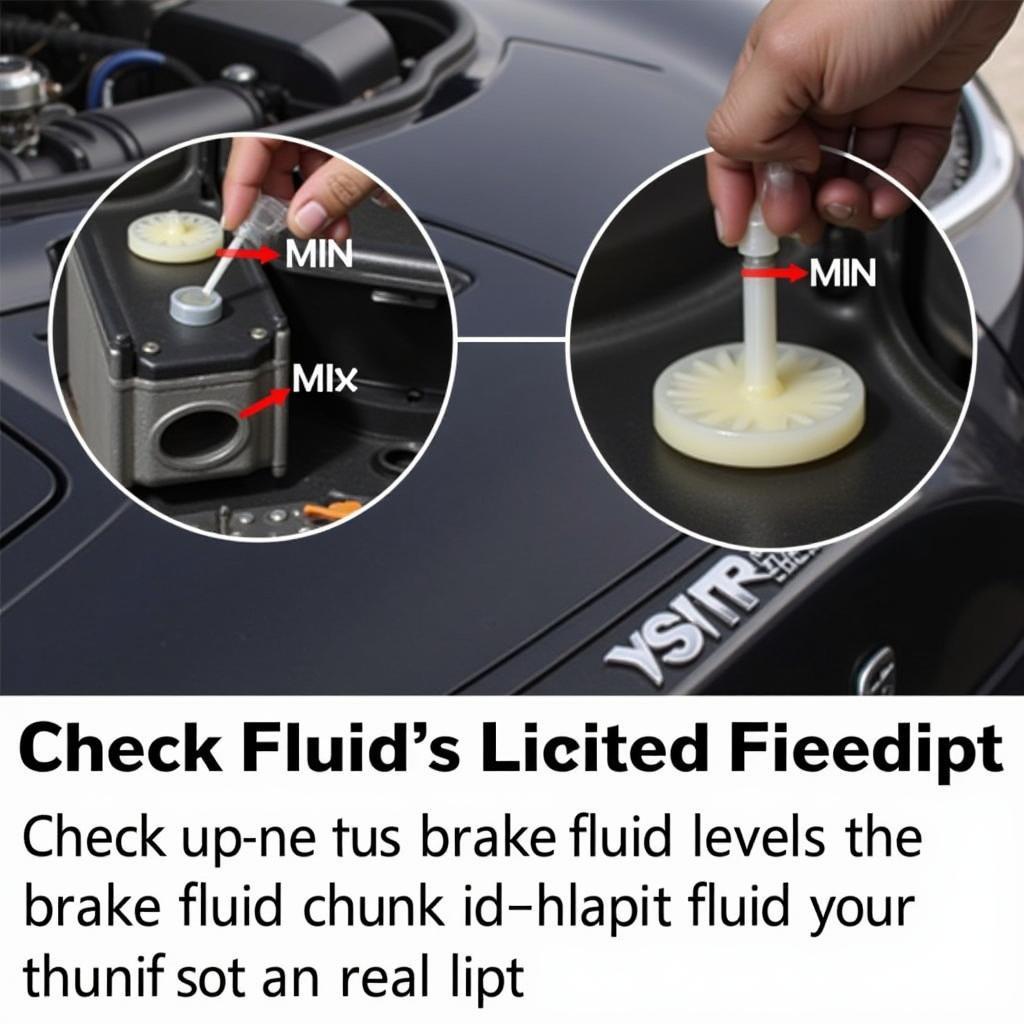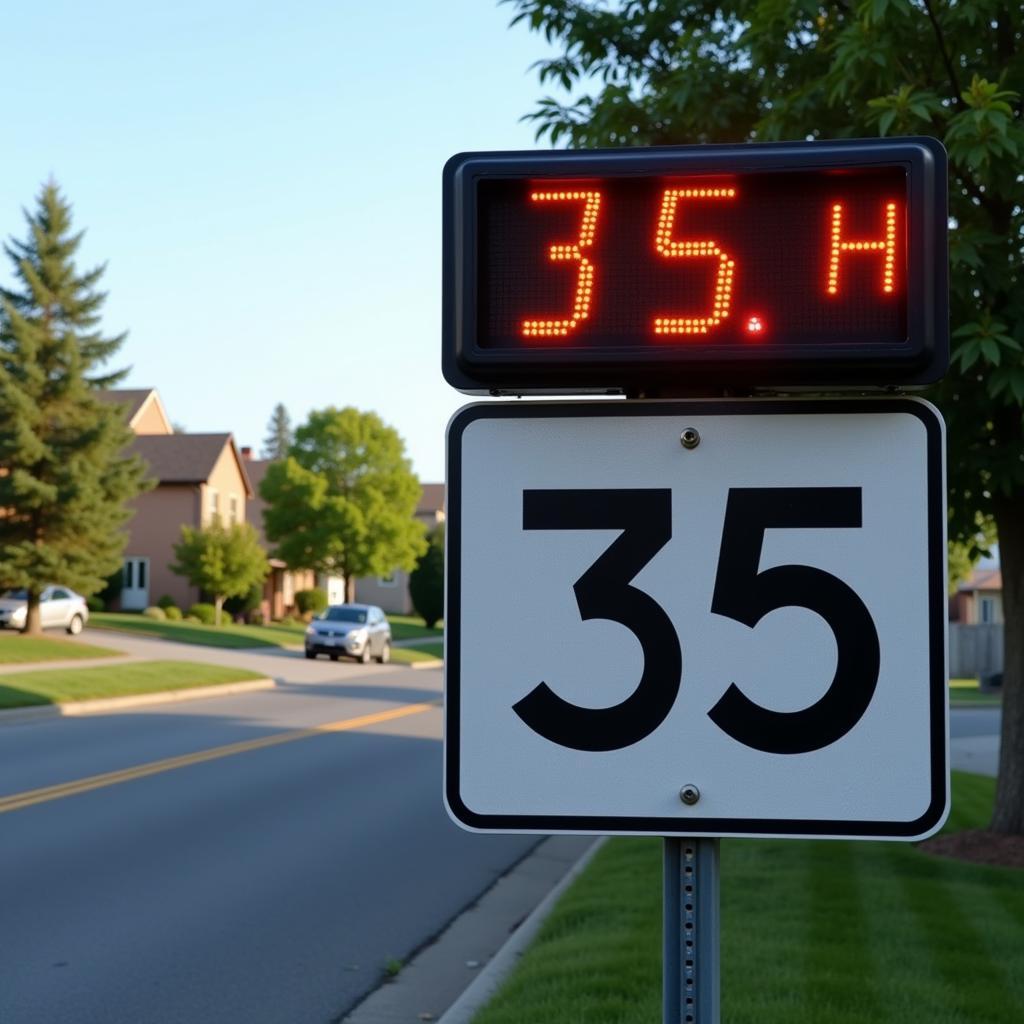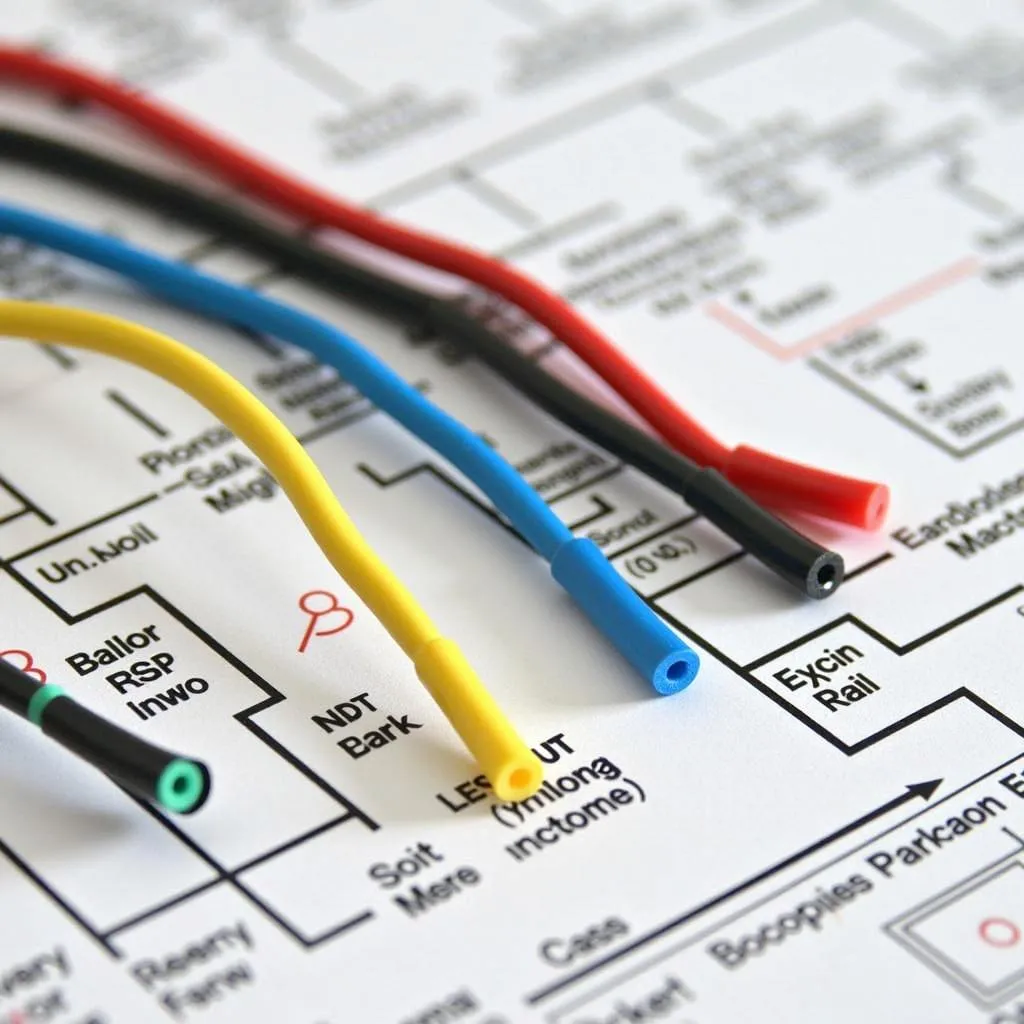The red brake warning lamp on your dashboard is a crucial safety feature, illuminating when your car’s electrical system detects a fault within the brake system. This article delves into the intricacies of the red brake warning lamp circuit, empowering you with the knowledge to diagnose and address potential issues.
What Triggers the Red Brake Warning Lamp?
The red brake warning lamp is designed to alert you to several potential problems, including:
- Low Brake Fluid Level: This is the most common trigger. A sensor in the brake fluid reservoir monitors the fluid level, illuminating the warning lamp when it drops below a safe threshold.
- Parking Brake Engaged: In most vehicles, engaging the parking brake activates a switch that turns on the warning lamp, reminding you to disengage it before driving.
- Hydraulic System Failure: A leak or significant pressure loss in the hydraulic system, responsible for transmitting brake force, can trigger the warning lamp.
- ABS Malfunction: While a dedicated ABS warning light usually exists, some vehicles might illuminate the red brake warning lamp in conjunction with or instead of a separate ABS light if an issue with the Anti-lock Braking System is detected.
Components of the Red Brake Warning Lamp Circuit
Understanding the key components of the circuit can help you pinpoint the root cause of the illuminated warning lamp:
- Brake Fluid Level Sensor: Located in the brake fluid reservoir, this sensor detects low fluid levels and sends a signal to the warning lamp.
- Parking Brake Switch: This switch, usually positioned near the parking brake lever or pedal, sends a signal when the parking brake is engaged.
- Hydraulic Pressure Differential Switch: Found in some vehicles, this switch monitors the pressure difference between the front and rear hydraulic circuits. An imbalance, potentially indicating a leak, triggers the warning lamp.
- ABS Control Module: This module monitors the ABS system and communicates with the warning lamp circuit if it detects a malfunction.
- Instrument Cluster: This houses the warning lamp itself, receiving signals from the various components mentioned above.
Troubleshooting a Red Brake Warning Lamp
If your red brake warning lamp illuminates, it’s crucial to address the issue promptly. Here’s a step-by-step guide to help you troubleshoot:
- Check the Parking Brake: Ensure the parking brake is fully disengaged. If the light remains on, proceed to the next step.
- Inspect Brake Fluid Level: Carefully check the brake fluid level in the reservoir. If it’s low, add the recommended brake fluid type until it reaches the “MAX” line. However, avoid simply topping off the fluid if you suspect a leak, as this could indicate a more serious problem.
- Examine for Leaks: Visually inspect the brake lines, hoses, calipers, and wheel cylinders for any signs of fluid leaks. Pay attention to wet spots or drips.
- Consult a Professional: If you cannot identify a straightforward issue like low brake fluid or a disengaged parking brake, it’s crucial to seek professional help. Diagnosing complex brake problems often requires specialized tools and expertise.
 Checking Brake Fluid Level
Checking Brake Fluid Level
Importance of Timely Diagnosis and Repair
Ignoring an illuminated red brake warning lamp can lead to dangerous driving conditions. A malfunctioning brake system significantly increases the risk of accidents due to reduced braking effectiveness or even complete brake failure.
“A red brake warning lamp is never something to ignore,” says John Smith, a veteran automotive electrician with over 20 years of experience. “It’s your car’s way of telling you that something needs attention within the brake system. Addressing it promptly ensures your safety and the safety of others on the road.”
Preventing Red Brake Warning Lamp Issues
Regular vehicle maintenance is key to preventing brake system problems. Adhere to your car manufacturer’s recommended brake fluid flush intervals and have your brake system inspected by a qualified mechanic during routine maintenance checks.
Conclusion
The red brake warning lamp circuit plays a vital role in your vehicle’s safety by alerting you to potential brake system issues. Understanding its function, components, and troubleshooting steps empowers you to address problems promptly and ensure safe driving conditions. Remember, any time the red brake warning lamp illuminates, a thorough inspection is necessary to diagnose and rectify the underlying problem. Never compromise on brake system safety, as it directly impacts your well-being and that of others on the road.


